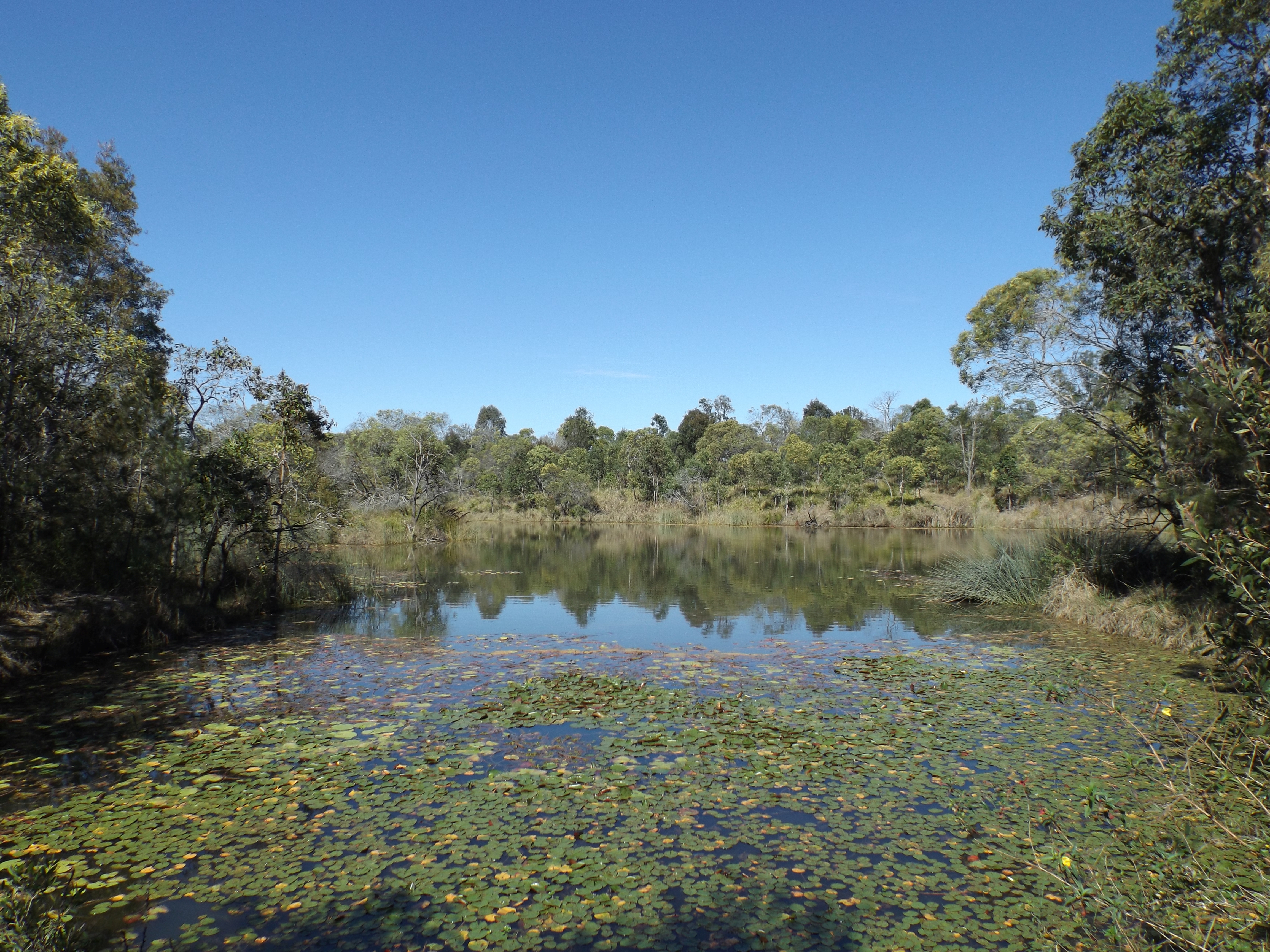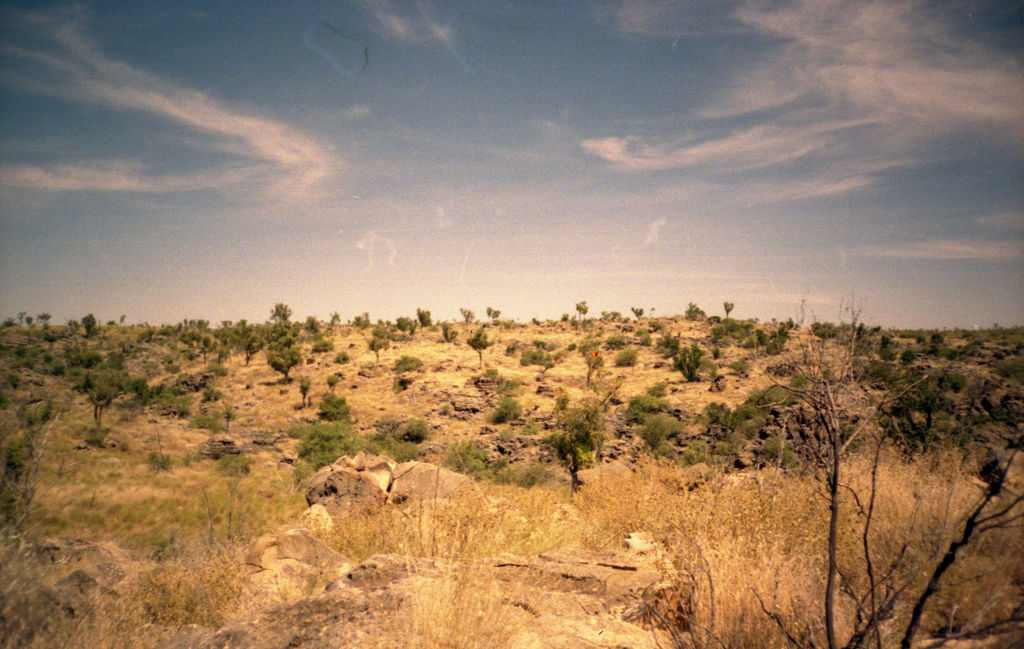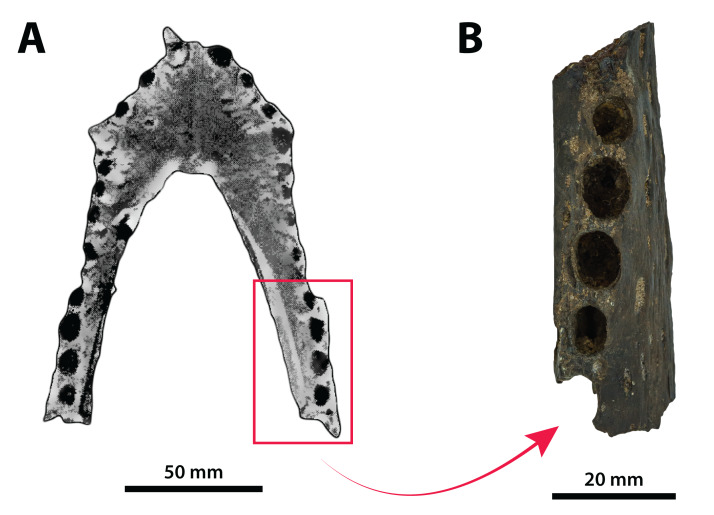|
Mekosuchinae
Mekosuchinae is an extinct clade of crocodilians from the Cenozoic of Australasia. They first appear in the fossil record in the Eocene in Australia, and survived until the arrival of humans: in the Pleistocene in Australia and within the Holocene in the Pacific islands of Fiji, New Caledonia and Vanuatu. Mekosuchine crocodiles are a diverse group. One of the last species, ''Mekosuchus inexpectatus'' from Holocene New Caledonia, may have been arboreal. The early Miocene species '' Harpacochampsa camfieldensis'' may have resembled a false gharial. Another mekosuchine fossil, currently undescribed, has been found in Miocene deposits from New Zealand. One genus, ''Mekosuchus'', managed to spread to the islands of the Pacific; it is believed to have island-hopped across the Coral Sea, moving first to a now submerged island known as Greater Chesterfield Island, then New Caledonia and onwards. In the Pleistocene, ''Quinkana'' was one of the top terrestrial predators of the Australian ... [...More Info...] [...Related Items...] OR: [Wikipedia] [Google] [Baidu] |
Quinkana
''Quinkana'' is an extinct genus of mekosuchine crocodylians that lived in Australia from about 28 million to about 10,000 years ago. Most attributed specimens have been found in Queensland. It is speculated to have been one of the top predators of Pleistocene Australia, along with megalania, the giant monitor lizard, and the modern saltwater crocodile. The genus and type species, ''Q. fortirostrum'' was named by paleontologist Ralph E. Molnar in 1981. Other species in the genus are ''Q. timara'' (1994), ''Q. babarra'' (1996), and ''Q. meboldi'' (1997). The name ''Quinkana'' comes from the "Quinkans", a legendary folk spirit from Gugu-Yalanji mythology. ''Quinkana'' is thought to possess long legs and had ziphodont teeth (lateromedially compressed, recurved, and serrated). The genus is distinguishable by the combination of these ziphodont teeth and a broad snout. It also has a unique alveolar (tooth socket) structure and a short anterior palatine process (upper mouth bone). ''Q ... [...More Info...] [...Related Items...] OR: [Wikipedia] [Google] [Baidu] |
Harpacochampsa
''Harpacochampsa'' is a poorly known Early Miocene crocodilian from the Bullock Creek lagerstätte of the Northern Territory, Australia. The current specimen consists of a partial skull and fragments of a long, slender snout reminiscent of that of a false gharial, demonstrating that it was a piscivore in life. It was originally tentatively placed within a group of Australian crocodilians now known as the Mekosuchinae, although this has been frequently disputed, with other authors instead suggesting it may have been a more basal crocodyloid or a type of gavialid. History and naming ''Harpacochampsa'' was named on the basis of several bones, primarily of the skull, discovered at the Bullock Creek fossil site in the Northern Territory of Australia. The type description lists four specimens, the holotype being formed by the right side of the back of the skull, preserving both the infratemporal fenestra and the supratemporal fenestra. Additional fossils include the tip of the snout ... [...More Info...] [...Related Items...] OR: [Wikipedia] [Google] [Baidu] |
Trilophosuchus
''Trilophosuchus'' ("Triple Crest Crocodile") is an extinct genus of mekosuchine crocodilian from Australia. Unlike living crocodilians, it is hypothesized to have been terrestrial. ''Trilophosuchus'' was approximately in length. It had a short skull with three ridges on top and large eyes. Fossils have been found at Riversleigh in north-western Queensland, and are Miocene in age. Only a single species has been described, the type species ''T. rackhami''. Discovery ''Trilophosuchus'' is known from a posterior portion of the skull, QM F16856, the holotype specimen. Several other isolated bones of the skull were found. The material was collected from the Ringtail Site of the Gag Plateau in Riversleigh, one of Australia's most famous fossil localities. The skull was uncovered in 1985 during an excavation by the University of New South Wales. The deposit in which ''Trilophosuchus'' were found are Early Miocene in age, roughly 20 million years old. The deposit, known as System C, ... [...More Info...] [...Related Items...] OR: [Wikipedia] [Google] [Baidu] |
Kalthifrons
''Kalthifrons'' is an extinct monospecific genus of mekosuchine crocodylian known from the Pliocene Tirari Formation in Australia. It contains a single species, ''Kalthifrons aurivellensis''. Discovery and naming The remains of ''Kalthifrons'' were discovered on the western shores of Lake Palankarinna in South Australia's Lake Eyre Basin. The holotype (specimen ''SAM P35062''), a cranium and two mandibular rami, was specifically recovered from the Mampuwordu Sand Member of the Pliocene Tirari Formation. It was found upside down with most of the ventral surface and both mandibular elements being in poor condition. The Golden Fleece Locality, where the fossil was discovered, also yielded a variety of isolated teeth, osteoderms and vertebrae remains, none of which however can be confidently assigned to ''Kalthifrons''. The generic name derives from the Dieri word for "spear" (kalthi) and fons, meaning forehead, a name chosen in reference to the animal's elongated frontal proces ... [...More Info...] [...Related Items...] OR: [Wikipedia] [Google] [Baidu] |
Mekosuchus
''Mekosuchus'' is a genus of extinct Australasian crocodiles within the subfamily Mekosuchinae. They are believed to have been made extinct by the arrival of humans on the South Pacific islands where they lived. The species of this genus were small in size, 2 m in maximum length, and terrestrial, making them the last surviving group of fully terrestrial crocodilians, leaving only semi-terrestrial species such as the Cuban crocodile and the dwarves ''Osteolaemus'' and ''Paleosuchus''. Fossils of related mekosuchines, such as ''Trilophosuchus'', have been found from Miocene Australia (the earliest known mekosuchine is the Eocene genus ''Kambara''), while ''Quinkana'' survived until the arrival of humans.Roberts, R.G., Flannery, T.F., Ayliffe, L.K., Yoshida, H., Olley J.M., Prideaux, G.J., Laslett, G.M., Baynes, A., Smith, M.A., Jones, R., Smith, B.L. (2001). New Ages for the Last Australian Megafauna: Continent-Wide Extinction About 46,000 Years Ago. ''Science'' 292 (5523): 1888†... [...More Info...] [...Related Items...] OR: [Wikipedia] [Google] [Baidu] |
Mekosuchus Inexpectatus
''Mekosuchus'' is a genus of extinct Australasian crocodiles within the subfamily Mekosuchinae. They are believed to have been made extinct by the arrival of humans on the Oceania, South Pacific islands where they lived. The species of this genus were small in size, 2 m in maximum length, and Terrestrial animal, terrestrial, making them the last surviving group of fully terrestrial crocodilians, leaving only semi-terrestrial species such as the Cuban crocodile and the dwarves ''Osteolaemus'' and ''Paleosuchus''. Fossils of related mekosuchines, such as ''Trilophosuchus'', have been found from Miocene Australia (the earliest known mekosuchine is the Eocene genus ''Kambara''), while ''Quinkana'' survived until the arrival of humans.Roberts, R.G., Flannery, T.F., Ayliffe, L.K., Yoshida, H., Olley J.M., Prideaux, G.J., Laslett, G.M., Baynes, A., Smith, M.A., Jones, R., Smith, B.L. (2001). New Ages for the Last Australian Megafauna: Continent-Wide Extinction About 46,000 Years Ago. '' ... [...More Info...] [...Related Items...] OR: [Wikipedia] [Google] [Baidu] |
Australosuchus
''Australosuchus'' is an extinct monospecific genus of crocodylian belonging to the subfamily Mekosuchinae. The type and only known species ''Australosuchus clarkae'' lived during the Late Oligocene and the Early Miocene of southern Australia. The generic name ''Australosuchus'' means "Southern crocodile". It was described in 1991 from fossil material discovered at Lake Palankarinna in South Australia. A 2018 tip dating study by Lee & Yates simultaneously using morphological, molecular (DNA sequencing), and stratigraphic (fossil age) data established the inter-relationships within Crocodilia, which was expanded upon in 2021 by Hekkala ''et al.'' using paleogenomics by extracting DNA from the extinct ''Voay''. The below cladogram from the latest studies shows the placement of ''Australosuchus'' within Mekosuchinae Mekosuchinae is an extinct clade of crocodilians from the Cenozoic of Australasia. They first appear in the fossil record in the Eocene in Australia, and survive ... [...More Info...] [...Related Items...] OR: [Wikipedia] [Google] [Baidu] |
Kambara
''Kambara'' is an extinct genus of mekosuchine crocodylian that lived during the Eocene epoch in Australia. Description At around 55 million years old, remains of ''Kambara'' are among the oldest Tertiary fossils found in Australia (although there are some recent Cretaceous fossils that are twice that age). ''Kambara'' is the oldest known mekosuchine. The genus name comes from an Aboriginal term meaning "crocodile". There are currently four species of ''Kambara'' described: the type species ''K. murgonensis'' (Willis & Molnar, 1993), ''K. implexidens'' (Salisbury & Willis, 1996), ''K. molnari'' (Holt et al., 2005), and ''K. taraina'' (Buchanan, 2009). All four species have a generalised crocodylian body plan, growing to sizes similar to the modern Saltwater Crocodile, ''Crocodylus porosus''. ''Kambara'' shows an interesting characteristic of having multiple bite patterns within the same genus. ''Kambara murgonensis'' has a near complete overbite, ''K. implexidens'' a more interl ... [...More Info...] [...Related Items...] OR: [Wikipedia] [Google] [Baidu] |
Ultrastenos
''Ultrastenos'' is an extinct genus of Australian mekosuchine crocodilian first described in 2016. The type species ''Ultrastenos willisi'' was discovered at Riversleigh in northwestern Queensland, Australia, and lived during the Late Oligocene era. Discovery and naming ''Ultrastenos'' was described in 2016 based on the holotype specimen ''QM F42665'', a posterior cranium and mandible found at the Low Lion Site of the Riversleigh World Heritage Area. While Riversleigh is known to have been home to a variety of other mekosuchine genera, the discovery of ''Ultrastenos'' represented a previously unknown morphology of the native Oligocene to Miocene crocodilian fauna. The paratype material includes further material of the postcranial skeleton, namely a left atlantal neural arch, atlantal intercentrum, a caudal vertebrae series and dorsal osteoderms, metatarsals, a right coracoid and a right tibia. Posterior cranial material from the White Hunter Site has also been referred to ''Ul ... [...More Info...] [...Related Items...] OR: [Wikipedia] [Google] [Baidu] |
Volia
''Volia'' is an extinct monospecific genus of mekosuchine crocodylians from Fiji named in 2002.; ; 2002: An extinct Pleistocene endemic mekosuchine crocodylian from Fiji. ''Journal of vertebrate paleontology'', 22: 612–628. It was around long. Notwithstanding its comparatively small size, it was probably the apex predator of the Pleistocene ecosystems of Fiji. Fossils of ''Volia athollandersoni'', the type and currently only known species, have been found in the Voli-Voli and Wainibuku Caves of Viti Levu Island. The holotype is housed in the collection of the Museum of New Zealand Te Papa Tongarewa. ''V. athollandersoni'' and the other large reptiles of Fiji may have been exterminated by human hunting soon after Fiji was colonized by ancient Polynesians. Etyomology ''V. athollandersoni'' is named after the New Zealand archaeologist Atholl Anderson. Phylogeny A 2018 tip dating study by Lee & Yates simultaneously using morphological, molecular (DNA sequencing), and stratigr ... [...More Info...] [...Related Items...] OR: [Wikipedia] [Google] [Baidu] |
Baru
''Baru'' is an extinct genus of Australian mekosuchine crocodilian. It was semi-aquatic, around 4 m (13 ft) in length. Being semi-aquatic its habitat was around fresh pools of water in wet forests, ambushing their prey, much like modern species. The word ''Baru'' is Aboriginal and means "crocodile's ancestor". Fossils have been found in Australia at Riversleigh in north-western Queensland and Alcoota in the Northern Territory. Species There are currently three valid species within the genus ''Baru''. The type species ''B. darrowi'' is known from the Middle Miocene of the Northern Territory and is the largest reaching size of 4–5 m in length. It is named after English actor Paul Darrow. Two older species, ''B. huberi'' and ''B. wickeni'' are known from the Late Oligocene Etadunna Formation of Queensland. In 2009, a Baru skull had been found at the Alcoota fossil site about 200km (125 miles) from Alice Springs, in the Northern Territory (NT) of Australia. It was t ... [...More Info...] [...Related Items...] OR: [Wikipedia] [Google] [Baidu] |
Paludirex
''Paludirex'' (meaning "swamp king") is an Extinction (biology), extinct genus of mekosuchinae, mekosuchine crocodylians from the Pliocene and Pleistocene of Australia. Remains of this animal have been found in the Australian Fossil Mammal Sites (Riversleigh), Riversleigh lagerstätte of northwestern Queensland. It was a medium-sized crocodile, estimated to grow to at least 4 metres in length. Discovery and naming In 1886 Charles Walter De Vis informally described ''Pallimnarchus pollens'' based on fragmentary cranomandibular and osteoderm material discovered around 1860 that was mineralised by apatite. While this marked the first fossil crocodile ever described from Australia, the name was merely coined "out of convenience". Regardless the name came to widespread use with a variety of specimens being referred in addition to the syntype specimens. In 1997 a second species was named by Paul Willis and Ralph E. Molnar, Ralph Molnar, ''Pallimnarchus gracilis''. Given the fragmentar ... [...More Info...] [...Related Items...] OR: [Wikipedia] [Google] [Baidu] |





_white_background.jpg)
